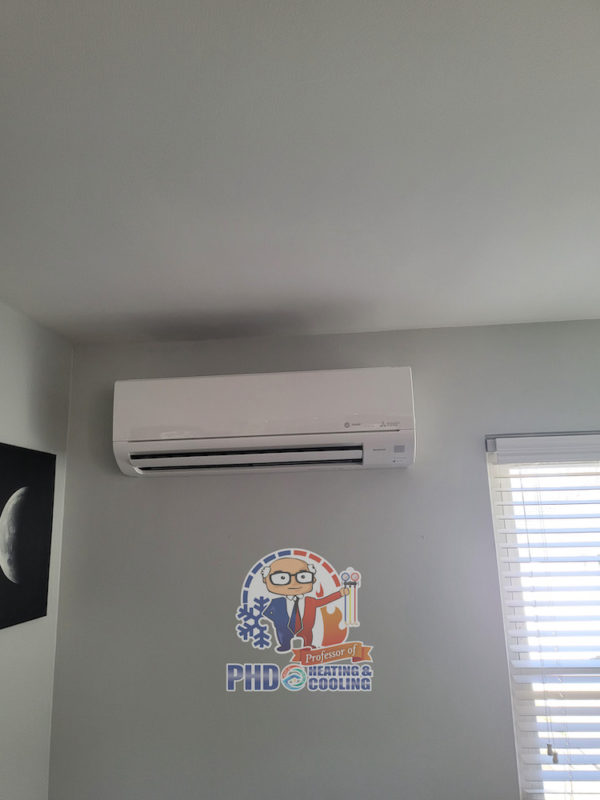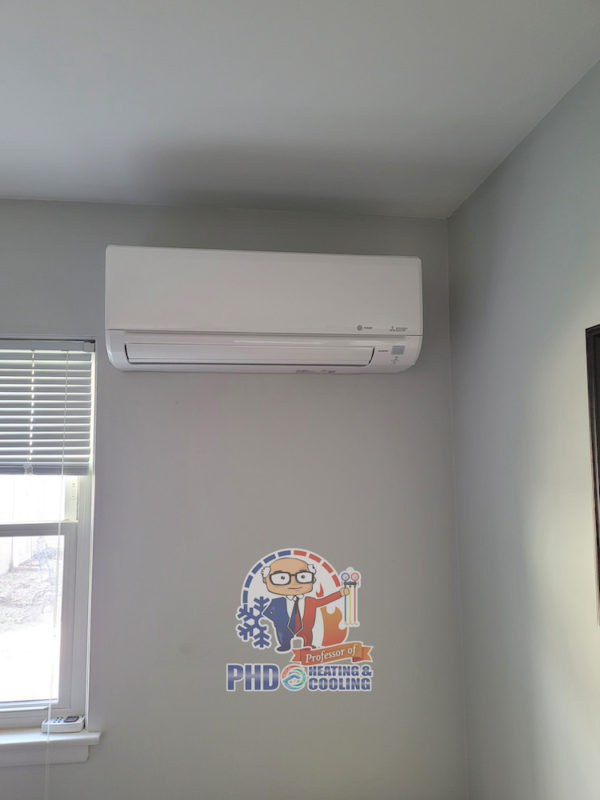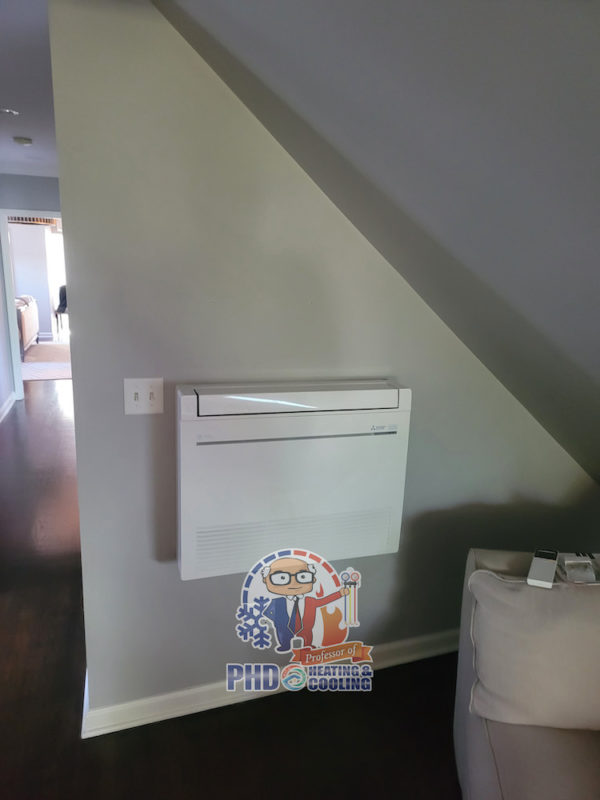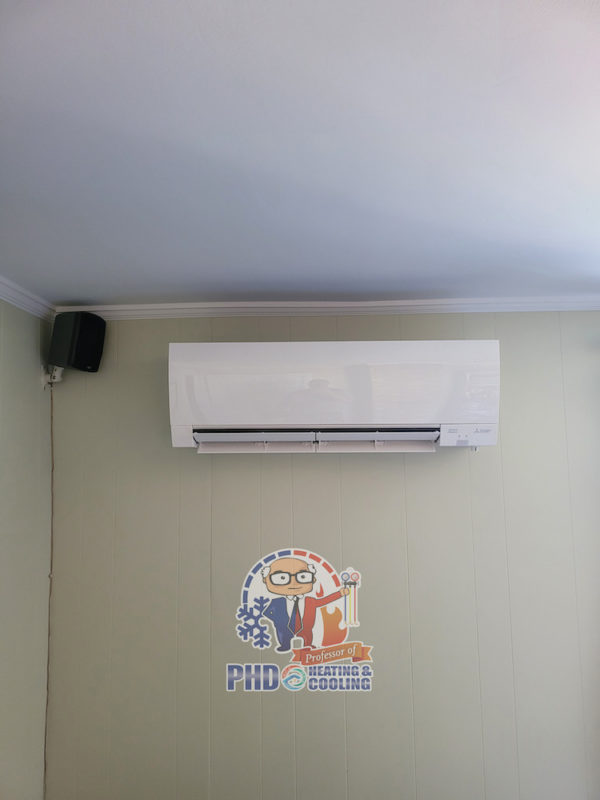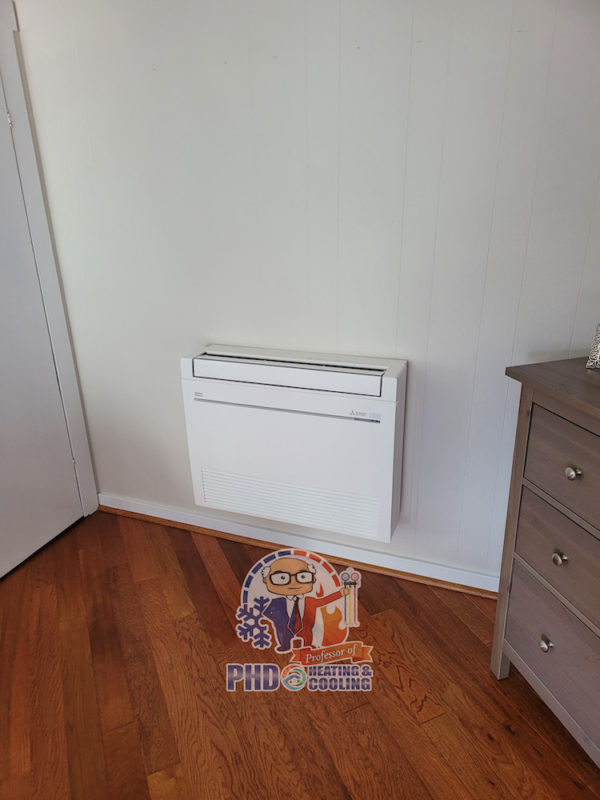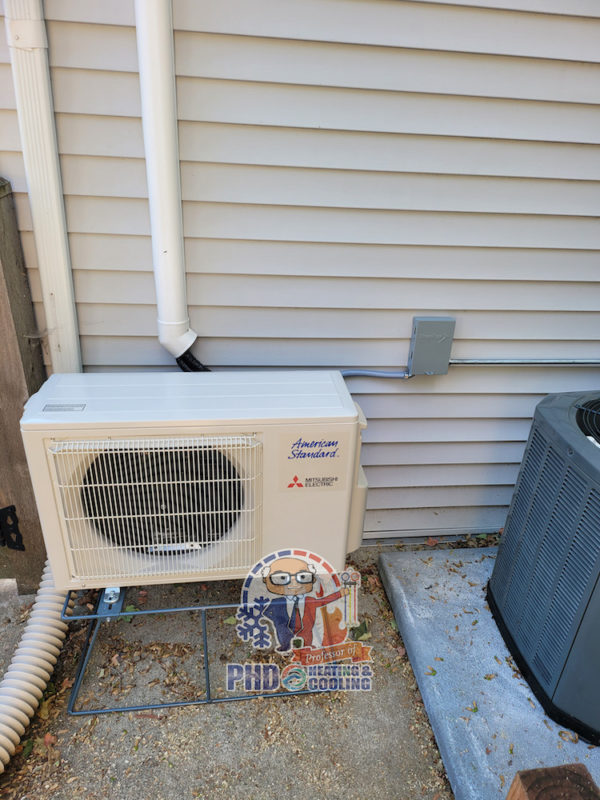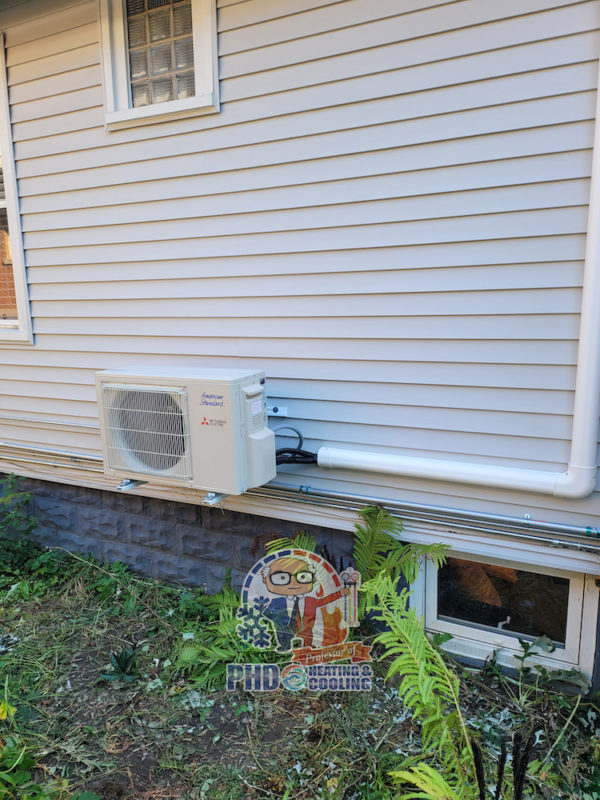Simply put, a “Split System” is a heating and air conditioning system, which has two main components, the indoor unit and outdoor unit. The indoor unit absorbs heat energy in the cooling mode, and the outdoor unit rejects the very heat absorbed by the indoor unit. The cycle is repeated until the set temperature is met. Although the indoor and outdoor units are located in physically different “split” locations, they are connected and operate as, one system, continuously circulating refrigerant liquid and vapor by means of interconnecting, dehydrated copper refrigerant lines, commonly referred to as a “Line Set”.
Reasons for the Switch to Mini-Split Ductless System
“Mini splits” or ductless air conditioners are becoming more popular among for a good reason. Whether you have a newer home without a traditional forced-air heating system or live in an older house without existing ductwork, mini-splits offer several advantages over central heating and cooling systems. Why consider a ductless air conditioner? Here are a few important reasons.
No compromising the architecture of your home. Because mini splits are minimally invasive, you do not have to go through the hassle of having ductwork and air vents installed, or having your home torn apart. Mini splits can be installed by drilling a small hole into the wall, and their small size never intrudes on your home’s beauty or decor. Ductless and eco-friendly for heating and cooling your home, enjoy greater control over your family’s comfort.
A cost-effective solution to comfort. We are not just talking about operational costs, but installation and other factors. When you install a traditional HVAC system, there may be considerable renovation to consider if walls have to be torn out for the installation of ductwork. Rebuilding the wall, painting, replacing light switches or receptacles – it is important to keep all of this in mind considering all that’s required with a mini-split is a small hole in the wall.
A mini-split ductless system costs about half of what it costs to install a central unit. While mini-splits cost more than central HVAC systems regarding cooling capacity, it is important to remember that mini-split systems are “zoned” meaning you can cool or heat only the room or rooms someone is occupying rather than the entire house. Unlike ducted systems, mini-splits have no energy loss, so they are more energy efficient and cost less to operate.
Small in size. Ductless air conditioners are ideal for small living spaces such as an apartment, basement or attic room, or smaller home. While large homes are better served by a central HVAC system, a mini-split may be the solution for a new addition or previously unconditioned space that now needs air conditioning or heating. Every situation is different, however mini-splits are compact in size and high recommended for cooling smaller spaces or homes without ductwork. Sleek and stylish, these units are mounted on the wall and blend seamlessly into the surroundings. Even the outdoor units are compact and mounted high on the exterior wall where they are connected to the outdoor compressor and refrigerant lines.
An eco-friendly cooling/heating option. Many Michigan homeowners are concerned about the environment and looking for alternatives to not only air conditioning but appliances and other equipment as well. Because mini split systems are designed for use in specific zones, you only cool the area where you need it. This results in substantially reduced energy use – and no conditioned air leaking from ducts as is often the case with central HVAC systems. Additionally, mini-splits operate on the most environmentally friendly refrigerant available today, a huge advantage for those concerned about the environment.
Built-in heat pump means warm air during winter months. Ductless air conditioners essentially work in reverse during the winter months, utilizing an integrated heat pump that heats the areas of your home where you need it. Heat from outdoor air is absorbed and brought inside to warm the air, whereas in summer months heat is extracted from the indoor air and taken outside. You enjoy a comfortable home no matter the season.
Save on energy use. The EPA estimates that by switching to a ductless system, homeowners can reduce energy use by 20 to 30 percent each month. Again, no ductwork means no wasted energy, and mini-splits consume only the amount of energy necessary to cool or heat a specific space. Ductless air conditioners maintain the comfort you desire, without constant cycling on and off to maintain comfort as traditional HVAC systems do. What about a window-mounted air conditioner? Even those with high ENERGY STAR ratings are far less efficient than mini-splits.
Convenience. What could be easier than installing a window AC unit? While a window air conditioner may not require professional installation, they are simply not an efficient way to cool your home over the long term. Window units blast cold air in the immediate vicinity, while the rest of your home remains too warm or too cool without installing several other window units. They also block the view and natural light and can be unsightly and bulky in terms of decor. Window units only cool, so you do not enjoy the heating benefits during winter months you do with a mini-split system.
As you can see, there are many reasons you may want to consider switching to a ductless air conditioner whether to preserve the architectural integrity of an older home or enjoy comfort where you need it without wasting energy often lost through leaking ductwork.
What are the advantages?
With near universal design, mini-splits are “heat pumps” which provide both heating and cooling for a home. Here are key advantages when compared to traditional split systems:- Efficiency- Mini-splits are highly engineered systems which offer attractive operating efficiencies, in many instances, eligible for utility company rebates.
- They heat and cool providing year-round comfort.
- Solar friendly- Due to very low power requirements, mini-splits are an ideal complement to “Net Zero Energy” homes, or any home using renewable power.
- Carbon footprint- Mini-splits are 100% electric, with zero operating emissions of any type.
- Zoning- Most mini-split manufacturers offer systems capable of room-by-room “zoning”, to account for peak demands of a room based upon construction type, exposure orientation and usage.
- Variable capacity- Mini-splits are typically DC inverter driven. That is, they have a variable speed compressor, which modulates in proportion to instantaneous demand. Unlike conventional cooling systems, which operate with an ON-OFF strategy. Would you use an ON-OFF switch as the accelerator in your vehicle?
- Location, Location, Location!- Mini-split outdoor units are compact; they can be located far away from noise sensitive areas.
- They’re perfect for additions and remodels where access to current HVAC system is difficult to access.
- You would like better air quality. Without ducts that collect dust all the time, ductless heating and cooling circulate far fewer contaminants.
- You have an add on room and don’t want to make drastic changes to the rest of the HVAC system.
- SSSHHHHH! - Modern mini-split systems are remarkably quiet.
Call us today at (312) 409-33-26 or contact us online to schedule a visit with one of our specialist.
One of the popular options for heating and cooling in modern homes is the ductless mini split heat pump.
Water Leaks
Each of the wall-mounted mini-split system has a series of connections routed through a hole behind it: a power line, a refrigerant line, and a condensate line. The last one removes water moisture from the cooling process so it doesn’t enter your home. These lines can leak. If you notice signs of water damage around the air handler, call for repairs.
Broken Mini-split system
This is actually something of a benefit when it comes to ductless mini splits. If a single mini-split unit breaks because of a failed motor or other problem, the rest of the units throughout the house will continue to run. The only part of a home that loses cooling/heating is the one with the broken unit. When one of the units stops working, call for repairs.
Leaking Refrigerant Lines
Loss of refrigerant is a routine repair need for any type of heat pump. But there is a higher chance of it occurring in a ductless system because there are more refrigerant lines running to the various air handlers. Keep a close watch for the warning signs of refrigerant loss, such as a drop in heating/cooling power from the system or coils icing over in the mini-split unit. Refrigerant loss must be repaired professionally as soon as possible, since it threatens a complete system breakdown. We install and service different mini-split system, including the Mitsubishi Ductless Mini Splits, which are among one of the best systems available.
Call us today at (312) 409-33-26 or contact us online to schedule a visit with one of our specialist.
Ductless mini splits are air-source heat pump and A/C systems that utilize sophisticated components to provide home heating and cooling efficiently and quietly. It is important to work with a reputable HVAC contractor that specializes in the installation and maintenance of ductless systems for best and exacting results. Following are the basic procedures your ductless professional performs:
- Airflow: Air-source heat pumps require free airflow to the indoor and outdoor heat-exchange coils. The air filter inside the indoor air-handling unit (AHU) is removed and cleaned. The outdoor cabinet is inspected for airflow obstructions.
- Cleaning: The coils are deep-cleaned to remove debris and contaminants, and to help prevent mold and mildew growth. Clean coils are important for efficient heating and cooling.
- Refrigerant: The refrigerant lines, coils and flare connections are inspected for leakage.
- Drainage: Clear drainage must be maintained to prevent water leaks and damage. Drain lines are flushed and treated to clear and inhibit algae and mold growth.
- Electrical contacts: Wiring and contacts are inspected for wear. Poor wiring and electronics can cause ice to form on the outdoor coil (heating months) and indoor coil (cooling months).
- Compression: High-performance ductless mini splits utilize digital inverter-driven compressors, electronic expansion valves (EEV), and sophisticated sensors to prepare, regulate and monitor super-heating of high-efficiency refrigerant. Only a trained and skilled technician should inspect and test these components.
- Homeowner care tips: Clean the air filter each month. A dirty filter blocks heat exchange and increases energy bills. Check the outside cabinet periodically for airflow obstructions, such as leaves, ice and snow (depending on your regional weather).
Check for Ice or Snow
When used for heating, ductless air conditioners can collect ice and snow, which can inhibit their ability to run efficiently. Regularly check the outside of your machinery for accumulation, and if you spot any, gently remove it from the unit. During the winter, you are likely running your unit frequently, and you will want to make sure that it is protected. Leaving this part of the unit covered in ice can quickly lead to expensive issues.
If you have questions, or if you would like to schedule fall maintenance for your ductless mini split, please contact us.
Call us today at (312) 409-33-26 or contact us online to schedule a visit with one of our specialist.
Schedule service / Get my free quote
Fast, reliable, and quality results. Contact us for a free quote today.

